See here for bug fixes.
CM4D v25.1
CM4D Database Schema: 25b/25c
CM4D Template Performance
With the introduction of the HOOPS 3D Engine in v25.0 there were some cases where large templates with many views experienced a performance decrease. In order to improve the template performance, all Views in a document are treated as a 'snapshot' or a static image until the view is manipulated in some way (zoomed, rotated etc.). When necessary, the view 'snapshot' is updated automatically. Views retain the single-click behavior in that unlocked views can be selected to be moved on the sheet and the right-click context menu can be accessed the same way as before. There are still options in the Document Setup dialog for selecting a Resolution and manually updating the views for an entire document at once instead of an as-needed basis.
This change has altered the previous "View Snapshot" functionality. Snapshot mode is not enabled/disabled in a document, rather it has become an integrated part of view functionality which supports full modification of views and automatic regeneration of snapshots whenever necessary to improve processing speed of CAD models.
Results Database Reloaded
The Results database and supporting services have been optimized to support faster reporting and scalable data transfer between the Results and CM4D databases. Stability and performance has been improved by eliminating the use of the Message Queue (MSMQ) to communicate between clients and the server database. The Results Sender and Results Loader services use NServicebus with SQL Transport. The queue tables are created in the Site database. The initial transport for NServiceBus is SQL Server but other transports like Azure Storage Queues will be added in the future, in order to support a local CM4D implementation and a cloud Results database.
In addition to performance/stability improvements, we have also enhanced the Results database by adding support for more CM4D data to be made available in the Results database.
- Constructed Features
- Tolerance 2
- Reasonable Evaluation
- Causes – Masked Data and Comments
New Results Services
The CM4D Results Services are now two services called Results Sender and Results Loader. The Results Services are installed on Servers only, not on Client systems. CM4D creates entries in the table dbo.ResultsExportCommandQueue in the Site database. Results Sender then reads the entries from the Command Queue, gets the data from the CM4D database(s) and creates messages on NServiceBus for the Results Loader service. The Results Loader service processes the messages and updates the Results database.
Database Utilities
Creating and updating databases for CM4D can be a challenge, so we have provided four tools to make this database maintenance easier. Instead of locating the scripts and running each script individually on each database and in the right order, you can simply run each tool and select an action.
- CM4D Site Utility – Runs all necessary scripts on an empty Site database or upgrade a Site to either v24 or v25. Connection information is obtained from the CM4D.4ds file (via DbConnect).
- CM4D Datasource Utility – Runs all necessary scripts on an empty CM4D Datasource database or upgrade a CM4D Datasource to either v24 or v25. Connection information is obtained from the connection string entered in the utility command window.
- CM4D Results Utility (formerly ‘DbMigrator’) – Create an entirely new Results database, create the tables for an empty database or upgrade from a previous version. In cases of upgrading, the tool automatically detects the existing database tables and adds or changes tables as needed. Connection information is obtained from the Site database (via SiteManager).
- GUID Replacer – The GUIDS for the CM4D databses must be unique. This can be a problem when a database is copied (e.g., via backup/restore) and added as another datasource to the Site database. In instances where this occurs, you may end up with duplicate GUIDs in the CM4D databases. The GUID Replacer tool may be used to reassign all GUIDs in the CM4D database in order to ensure uniqueness. This utility should only be used when necessary and by the appropriate personnel.
Export Data - Updated DMIS Formatting
The export data option previously called 'Volvo DMIS' is now referred to as 'DMIS Statement' has been updated to take into consideration changes to the DMIS formatting definitions. In addition, a new section has been added to the Cm4d.ini file with options for further customizing or updating formatting for the DMIS Statement export format.
Feature Specific 3D Markers
There are now unique 3D feature markers for all feature types. Previously, the feature specific types were limited to surface, hole, slot, midpoint, distance and xyz. Now the remaining feature types are represented with the addition of gap, flush, range and plane.
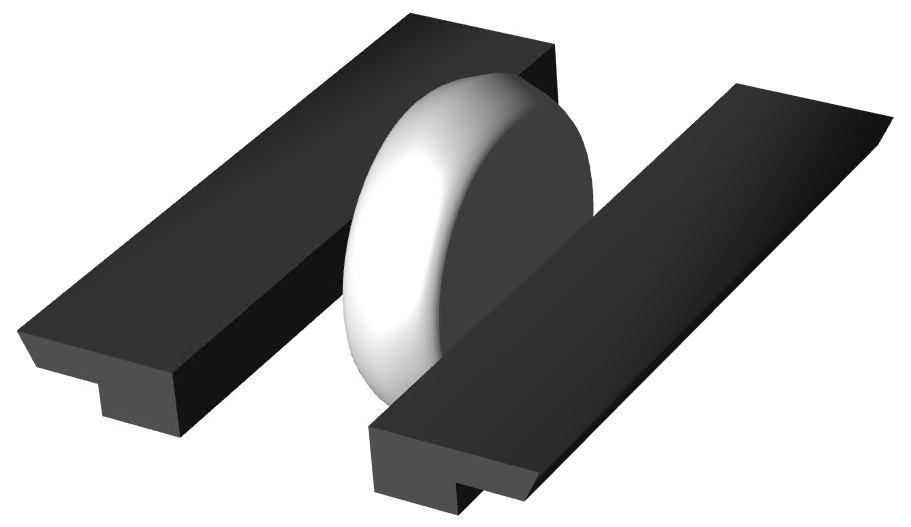 |
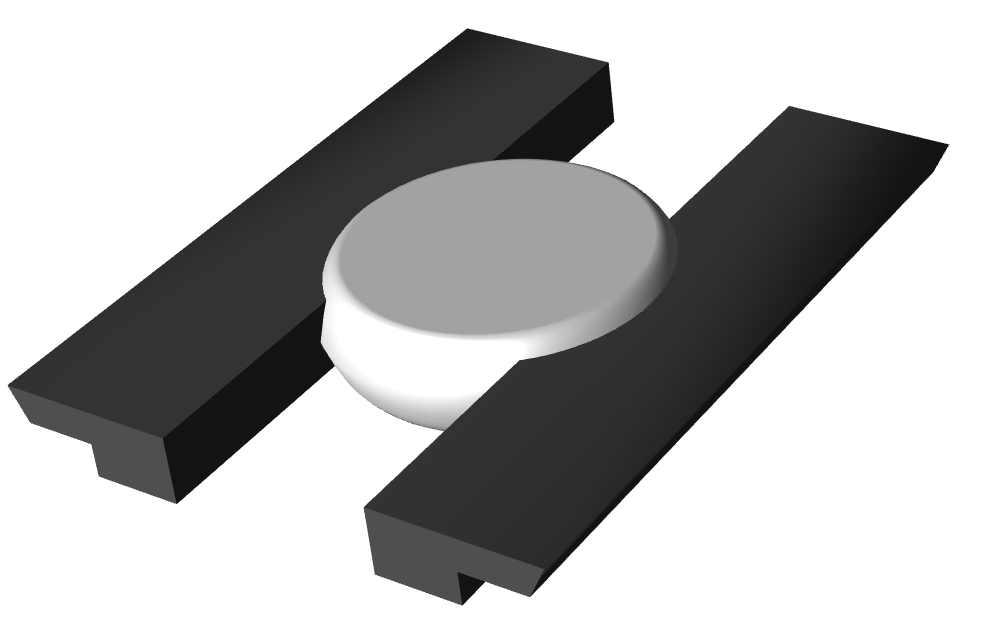 |
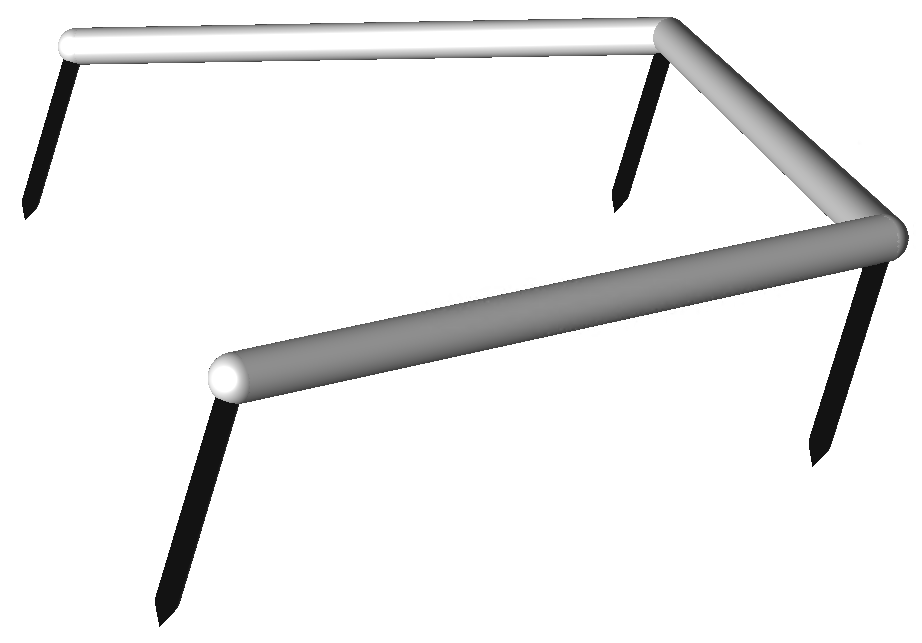 |
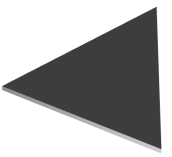 |
| Gap | Flush | Range | Plane |
Routine Handedness Variable
A variable has been added that will resolve the handedness of the Routine, but with a modification. In cases where there is no handedness defined for the routine and would typically resolve as 'Routine^?H', this variable resolves as 'Routine^BH': ~rout,hand,RH,LH,BH,BH~
DataSet Events Coverage Removed
Event Coverage has been removed from the DataSet Event Properties option for external event notifications. The options for 'by cell' or 'by row' are no longer available, and all events are considered the same as the previous coverage 'by DataSet'. Now all events will send a single notification when any data is triggered by the DataSet. This has been done in order to prevent a huge number or email notifications to clutter up the mail server and because by cell/row has proved to be an unnecessary refinement for outgoing events.
DataUtility Search Improvements
The search capabilities in DataUtility have been enhanced to include some of the newer data parameters:
- Nominal UVW – Checkboxes have been added for Vector U, Vector V and Vector W Nominal types. A search using the “All” checkbox also includes any UVW vector nominals.
- Results Rules – Filter options have been added to the Samples Search to filter results by Samples with no Results Rule assigned, or to search for a specific Results Rule name.
CM4D v25.0.21182
- CM4D Db Schema: 25b
Wireframe (WYR) Image Support Re-introduced
With the introduction of the HOOPS engine in v25, support for some older image types were discontinued. However, in this version support for 3D wireframe models has been re-introduced. This includes settings for wire overrides in CM4D image properties.
Document Properties - Feature Marker Colors
Feature marker default colors can be set on the document properties. The color can either be set using a dropdown color picker, or the colors can be defined in the Cm4D.ini file. If these are defined in the INI file, the color values are copied into the document on creation. On existing documents, the values can be reset to values saved in the INI file.
See here for more information.
New Variables for Chart Axis Labels
In charts using a query with multiple Routines, chart axis labels show the DataSet column number when the Sample labels cannot be resolved.
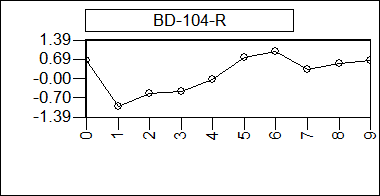
New variables have been added that can be used in the axis label field that will properly resolve for multiple Routines:
- ~cellsamp,label~
- ~cellsamp,filter,[a-z]~
For DataSets with multiple Routines, these variables will resolve the chart axis as the Sample Label or Filter Label instead of the DataSet column number. This is best used with either a single feature or with Routines that have corresponding samples.
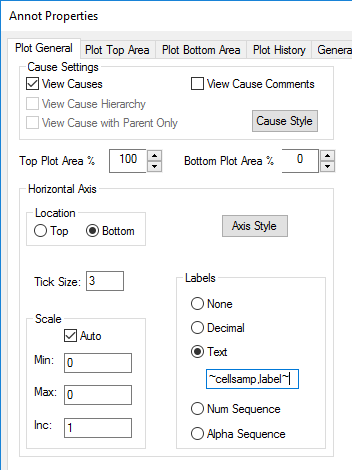 |
~cellsamp,label~ | |
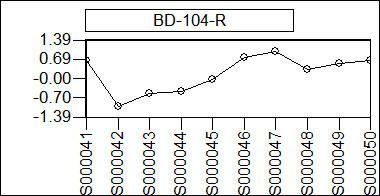 |
||
| ~cellsamp,filter,c~ | ||
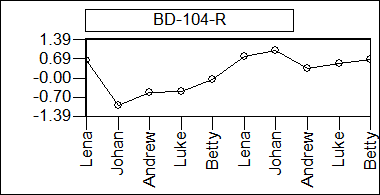 |
See here for more information.
New QaDataSource API Functions
The following properties of QaDataSource have been added:
- UseDataSetFeature => true selects Use Feature
- DataSetFeatureLabel => set/get the Feature for a DataSet
- DataSetFeatureChr => set/get the characteristic
See here for more information.
CM4D v25.0.20136.1
General Notes
- Site Db Schema: 25b
- CM4D Db Schema: 25a
- TLS 1.2
CM4D Roadmap
Interested in the CM4D development roadmap? Visit: https://cm4d.roadmap.ats-global.com/
Improved 3D Visualization Technology
CM4D has had 3D visualization since its inception in 1991. Over the years, we have had four generations of 3D visualization built into the product.
HOOPS Engine
The next generation of technology provides state-of-the-art 3D viewing and interaction capabilities. The initial implementation includes functionality such as:
- Improved visualization quality
- Improved tool set
- Direct import of CAD model
CM4D image formats XGL and WYR are no longer supported. See here for a list of supported 3D file types.
Cutting Planes
The 3D HOOPS engine has built-in interactive cutting plane support and automatically generates “capping geometry” for closed meshes. It also supports aggregating cutting planes into sectioning planes to slice through and cut-out parts of a model. See here for more information.
Display Modes
Display Modes are different ways that CM4D can draw the model in a View. Switching the display mode is an easy way to turn off visibility of faces and lines for the whole model, make Feature markers more prominent or to provide a result suitable for hardcopy or screenshots. See here for more information.
Transparency
Updated transparency settings provide a sliding scale from solid to transparent. See here for more information.
3D Feature Markers
Features with vectors have a 3D marker that is unique for the feature type. This version introduces Surface, Hole, and Slot. Constructed Features Midpoint and Distance also have a unique marker.
Optional Results Database
Using the Results Database is now optional. If you do not want to setup and use Results, you can disable the option at the Site database level. When the Results database is disabled, results messages will not be generated and the results services are not used.
Without the Results database configured you will miss out on the benefits of a high-performance repository of information available for business analysis.
In future versions of the product, the Results data will be a key part of the development path and a requirement for some new CM4D applications.
Report Manager in Classic
Added a mechanism to administrate Managed Reports in CM4D. Document managers can create, modify and delete Managed Reports using CM4D Classic. This allows you to manage reports directly within the CM4D environment, rather than requiring the addition of CM4D Web. See here for more information.
Show/Hide Sheet Border
An option has been added to the SheetSet properties to show or hide the border of a Sheet in CM4D. See here for more information.
CM4D Version Format Reference
|
Major version |
Patch version |
Julian Date* |
Build Number |
|
25 |
1 |
19207 |
1 |
See here to see the release notes for previous versions.